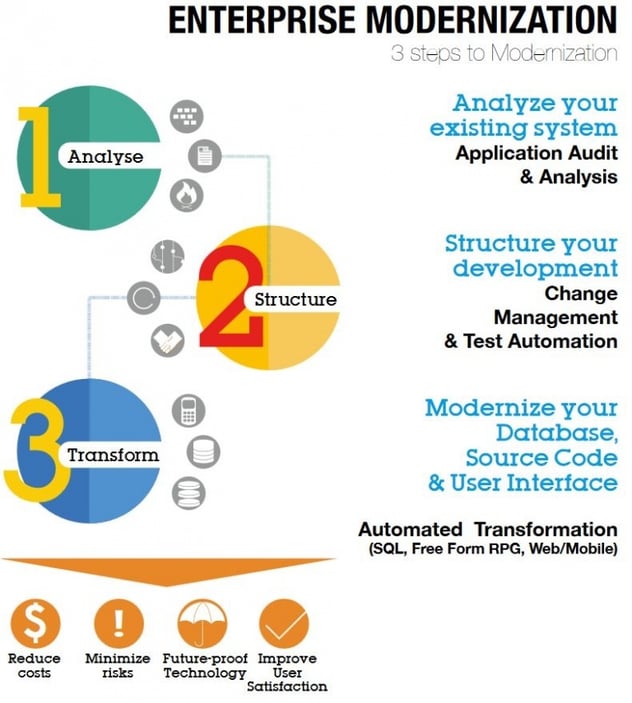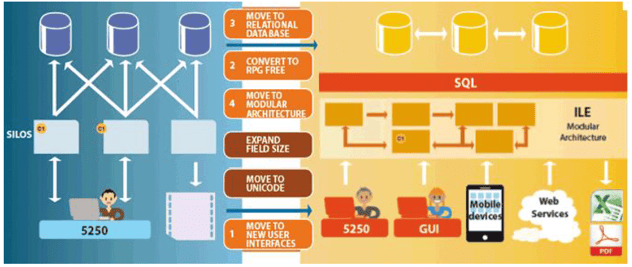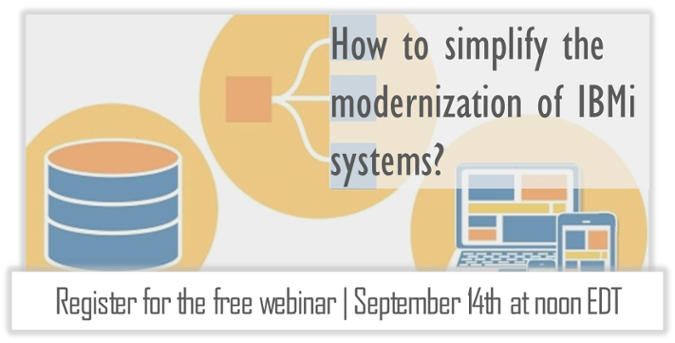Present Blog – IT Thought Leadership
Blog Present-IT thought leadership
Blog Present-IT thought leadership
IT thought leadership blog for CIOs and CTOs in Canada seeking resources to drive IT as a business contributor: hybrid cloud, infrastructure, managed services and security and IT recruitment.
How to Adopt a 3-Phase IBM i Systems Modernization Strategy Now
Francois Desjardins_ Modernization of IT assets is now determined by the rapid changes in today’s business requirements. Unfortunately, obsolescence eventually materializes on the IBM i systems (AS / 400), despite the efforts that have been made by IBM to ensure compatibility of applications on different generations of systems.
Modernization of IT assets is now determined by the rapid changes in today’s business requirements. Unfortunately, obsolescence eventually materializes on the IBM i systems (AS / 400), despite the efforts that have been made by IBM to ensure compatibility of applications on different generations of systems.
Since the arrival of the Internet, the speed at which companies must adapt continues to increase. Hence the importance of good Application Life Cycle Management (ALM) obliging a path to modernizing them.
In the eyes of leaders this need is becoming more and more necessary and it is reinforced by the significant gains that arise such as:
- • Reduction of project completion time;
- • Understanding and application management;
- • Improved user satisfaction;
- • Reducing operating costs.
However, the difficulty of the task can lead to remaining at status quo or a poor modernization approach. The following 3 phase approach has been proven to save you additional challenges for your IBM i systems modernization strategy.

1. Analyze the existing system
The analysis of your current system will help set the objectives and properly structure your modernization priorities.
Current business requirements needed to modernize systems will fall in three areas:
- • Your database;
- • The interface;
- • The programming language.
Your analysis must take into account all these aspects and provide you with information about:
- • The architecture of your data;
- • Business rules;
- • Dependencies between databases and applications;
- • Hot spots in your environment;
- • Etc.
When Analyzing quantitative and qualitative data, you can define which applications have to be replaced, abandoned or modernized.
2. Structure your development
In this phase, you will build your modernization plan based on the priorities identified in Phase 1. This will help establish a real change in management strategy.
This inevitably requires the establishment to have an agile delivery approach (Agile Delivery) and DevOps.
To structure your development from end to end, you will need to:
- • Choose your tools, preferably integrated, to ensure the integrity of the changes that will be made in Phase 3 and thus reduce errors
- • Set targets for achieving the various changes
- • Define the indicators to achieve the objectives.
3. Transform your application
While the two previous phases allow you to do the necessary planning to modernize your IBM i applications, Phase 3 is purely operational.
It is at this point that the application architecture, programming languages , database and interface are developed, deployed, tested and adjusted in a continuous cycle.
Modernizing applications in legacy systems give way to a more flexible, open, uniform and consistent system.

Take-away
Unfortunately, there often are negative circumstances (incident, bad customer experience, lack of compliance ...) that trigger the action for modernization of your applications on IBM isystem.
Yet, the effective deployment of a modernization strategy based on a rigorous schedule cannot be done in a hurry. Is it time to revisit your business priorities to incorporate this modernization?
About Blog
The right use of technology addresses business challenges and drives business growth in all areas of an enterprise. We hope this blog will offer insight into developing strategies and tactics to enable you to identify those key drivers of growth and keep pace with and anticipate the rapid technology change of today.
Posts by Topic
- IT infrastructure (116)
- IT security (92)
- IT Innovation (59)
- Trends (51)
- Cloud (47)
- Managed services (46)
- Mobility (38)
- Digital transformation (29)
- CIO/IT leaders (28)
- Events (28)
- News (23)
- Microsoft 365 (17)
- Security (17)
- IBM (16)
- Disaster recovery (DR) (14)
- High availability (12)
- Recruitment (12)
- Storage (12)
- Big Data (11)
- Collaboration (11)
- AI (9)
- Case study (9)
- Office 365 (9)
- BYOD (8)
- Customer Experience (8)
- Hybrid Cloud (7)
- Current events (6)
- SAP Hana (5)
- Business intelligence (BI) (4)
- Converged infrastructure (4)
- Convergence / Hyper-convergence (4)
- Virtualization (4)
- Copilot (3)
- Future of retail (2)
- Retail (2)
- trend (2)
- Backups (1)
- Beacon (1)
- Blog Migrations (1)
- Contests (1)
- Infrastructure TI (1)
- Innovation TI (1)
- IoT (1)
- MDM (1)
- Stockage (1)
- Virtualisation (1)
- blockchain (1)
- cio (1)
- replication (1)
- Étude de cas (1)

